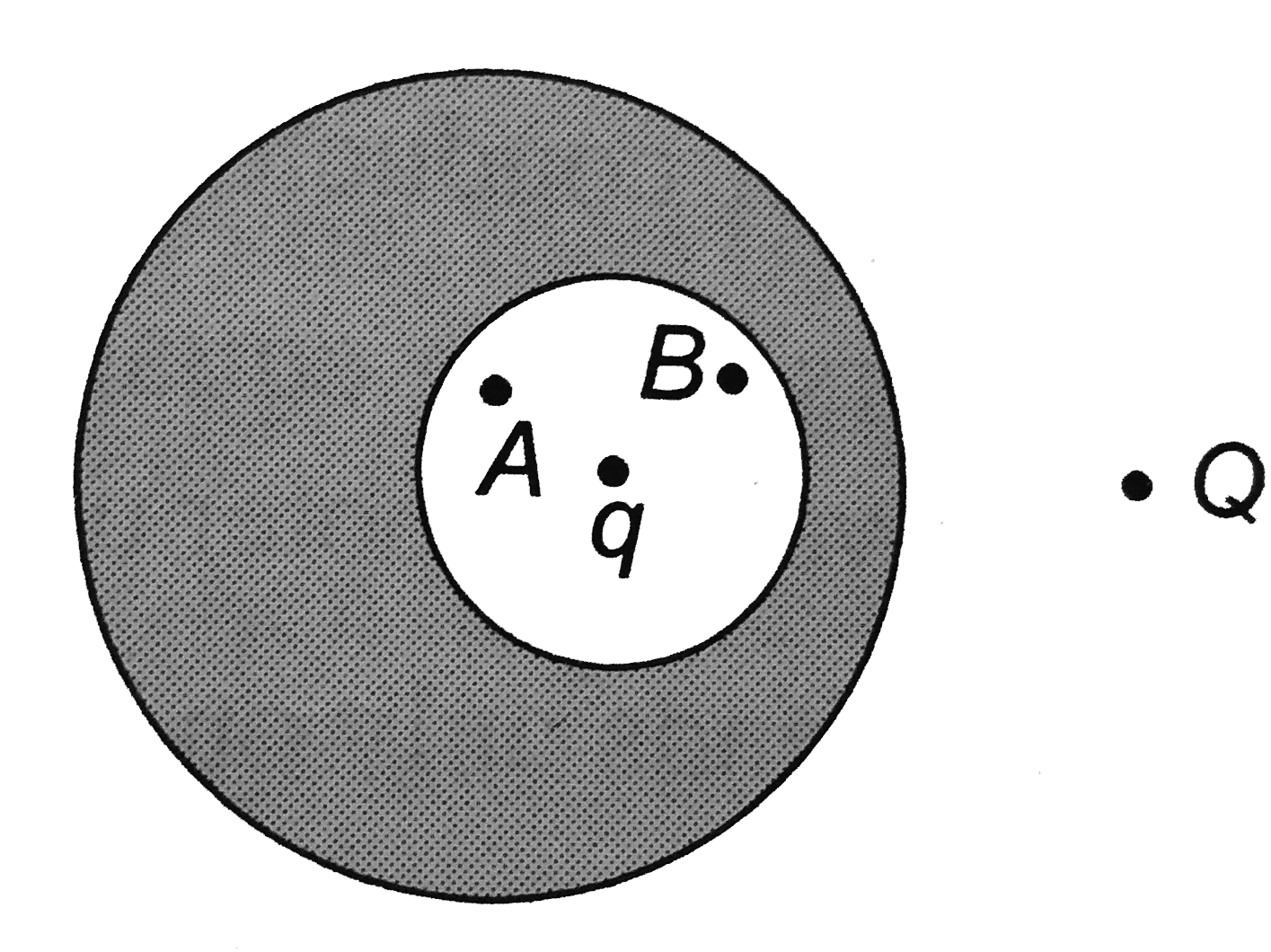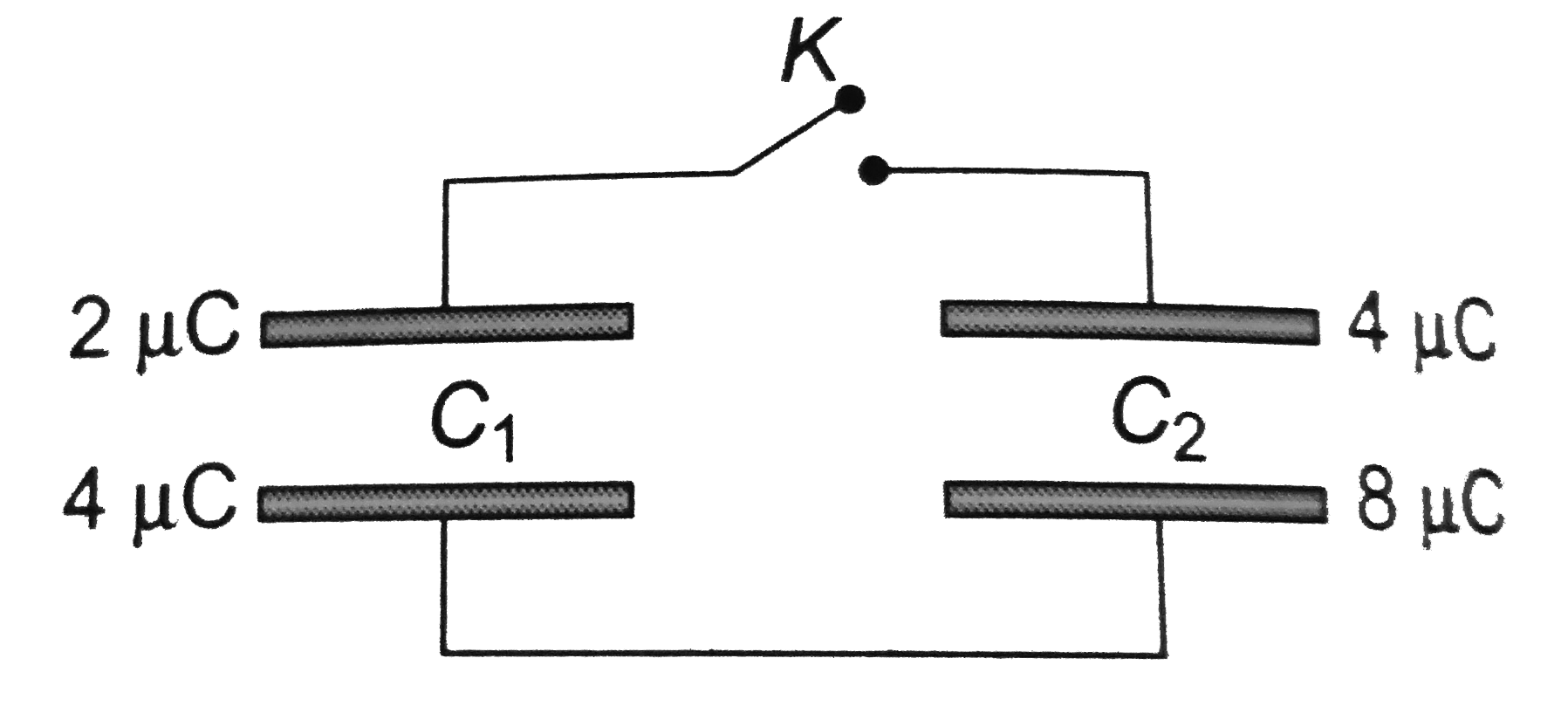Complete Solutions to Section B - Assertion Reasoning of chapter ELECTRIC POTENTIAL & CAPACITANCE of Class 12 book with complete answers and questions
| Class 12 | PHYSICS |
| Chapter | ELECTRIC POTENTIAL & CAPACITANCE |
| A2Z | Section B - Assertion Reasoning |
| Number Of Questions | 17 |
| Academic Year | 2023-24 |
Assertion: The potential of grounded object is taken to be zero.
Reason: Capacitance of the earth's very large.02:32View SolutionAssertion: If the accelerating potential of an electron is doubled then its velocity becomes `1:4` times.
Reason: If the move on a circular path will same velcoity.03:31View SolutionAssertion: Electric field is aways directed perpendicular to an equipotential surface.
Reason: Equipotential surface is a surface on which at each point potential is same.02:33View SolutionAssertion: Two positively and charged conductors are put in contact, the common potential will be less than the initial value of one of the conductors.
Reason: Both conductors will attract each other.02:30View SolutionAssertion: A molecule having intrinsic dipole moment is called polar molecule.
Reason: Centre of positive charge does not coincide with the negative charge in a polar molecule.02:51View SolutionAssertion: A parallel plate capacitor is connected across battery through a key. A dielectric slab of constant `K` is introduced between the plates. The energy which is stored becomes`K` times.
Reason: The surface density of charge on the plate remains constant or uncharged02:56View SolutionAssertion: Surface of asymmetrical conductor can be treated as equipotential surface.
Reason: Charges can easily flow in a conductor.01:58View SolutionAssertion: The capacity of a given conductor remians same even if charge is varied on it.
Reason: Capaciatnce depends upon nearly medium as well as size and shape of conductor.02:16View SolutionAssertion: Conductors having equal positive charge and volume, must also have same potential.
Reason: Potential depends only on charge and volume of conductor.03:02View SolutionAssertion: The force with which one plate of a parallel plate capacitor is attracted towards the other plate is equal to square of surface density per `epsilon` per unit area.
Reason: The electric field due to one charged plate of the capacitor at the location of the other is equal to surface density per `epsilon`.02:34View SolutionAssertion: Circuit containing capacitors should be handled cautiously even when there is no current.
Reason: The capacitors are very delicate and so quickly break down.02:30View SolutionAssertion: An isolated system consist of two particles of equal masses `m = 10 gm` and charged `q_(1) =+1muC` and `q_(2) =-1muC` as shown in figure. The initial separation of both charges is `l = 1m`. Both the charges are given initial velocities `v_(1) = 1m//s` and `v_(2) = 2m//s` towards right. then the maximum separation between the charges is infinity.

Reason: The total energy (Kinetic energy + electrostatic potential energy) of given two particle system is positive and initial velocity of separation is positive.05:02View SolutionAssertion: A positively charged rod is held near a neutral conducting solid sphere as illustrated below. The sphere lies on a insulated stand. The potential of ground (or earth) is zero. The potential at point `A` (point `A` need not be centre of the sphere) is higher compared to potential of gound (earth).

Reason: In this situation of assertion, the potential at the centre of conducting sphere is positive. the solid sphere being conducting, potential at each point in the sphere is same.03:56View SolutionAsseration: A point charge `q` is placed at centre of spherical cavity inside a spherical conductor as shown. Another point charge `Q` is placed outside the conductor as shown. Now as the point charge `Q` is pushed away from conductor, the potential difference `(V_(A) - V_(B))` between two points `A` and `B` within the cavity of sphere remains constant.

Reason: The electric field due to charges on outer surface of conductor and outside the conductor is zero at all points inside teh conductor.03:21View SolutionAssertion: Two concentric conducting spherical sheels are charged. The charge on the outer shell is varied keeping the charge on inner shell constant, as s result the electric potential difference between the two sheels does not change.
Reason: In the situation of statement-1, the electric field in the region between both the shells depends only on the charge existing on the inner shell.03:25View SolutionAssertion: Charges are given to plates of two plane parallel plate capacitors `C_(1)` and `C_(2)` (such that `C_(2) = 2C_(1))` as shown in figure. Then the key `K` is pressed to complate the circuit. Finally the net charge on upper plate and net charge on lower plate of capacitor `C_(1)` is positive.

Reason: In a parallel plate capacitor both plates always carry equal and opposite charge.05:25View SolutionAssertion: A parallel plate capacitor is charged to a potential difference `100 V`, and disconnected from the voltage source. A slab of dielectric is then slowly inserted between the plates. Compared to the energy before the slab was inserted, the energy stored in the capacitor with the dielectric is decreased.
Reason: When we insert a dielectric the plates of a capacitor, the induced tend to draw in the dielectric into the field (just as neutral). we resist this force while slowly inserting the dielectric, and thus do negative work on the system, removing electrostatic energy from the system.04:26View Solution
Section B - Assertion Reasoning questions and complete solutions for chapter ELECTRIC POTENTIAL & CAPACITANCE of A2Z PHYSICS (HINGLISH) of Class 12
All Exercises from A2Z Class 12 PHYSICS ELECTRIC POTENTIAL & CAPACITANCE
- AIIMS Questions
- AIPMTNEET Questions
- Assertion Reason
- Capacitor
- Capacitor Circuits
- Capacitor With Dielectric
- Electric Potential
- Electric Potential Energy
- Euipotentials
- Grouping Of Capacitors
- Problems Based On Mixed Concepts
- Relation Between Electric Field And Potential
- Section B - Assertion Reasoning
- Section D - Chapter End Test
